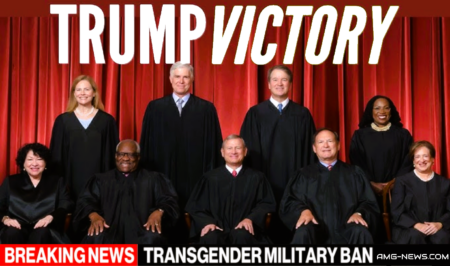BQQQM! DJT’s EXECUTIVE ORDERS – EXECUTIVE ORDER 13912, Donald Trump Federalizes The National Guard and Reserves to Active Duty! Gitmo TV – TRIBUNALS for JUSTICE Video
Medeea Greere, an independent publisher, is now on Telegram at https://t.me/AMGNEWS2022 and exists only on reader support as we publish Truth, Freedom and Love for public awareness. Thank You for your support!
President Donald Trump has issued Executive Order 13912, mobilizing the National Guard and Reserves to active duty. This bold move comes amidst a flurry of executive actions aimed at uprooting corruption and restoring sovereignty. As the nation braces for upheaval, Trump’s administration takes decisive steps to confront internal and external threats, signaling a new chapter in American governance.
With Executive Order 13912, Trump asserts his authority and consolidates control over national security. By federalizing the National Guard and Reserves, he ensures a unified response to emerging threats, both at home and abroad. This strategic deployment underscores Trump’s commitment to safeguarding the nation’s interests and maintaining stability in turbulent times. It’s a calculated maneuver that sends a clear message: the administration will not hesitate to wield its power to protect the American people.
13818
● Confiscated private and corporate assets
When we discuss the confiscation of private and corporate assets, we’re referring to the action taken by the government, typically through legal means, to seize ownership or control of assets held by individuals, businesses, or organizations. This can include a wide range of properties, such as real estate, financial holdings, vehicles, intellectual property, and more.
Confiscation usually occurs as a punitive measure or as part of law enforcement efforts to address various issues such as corruption, financial crimes, money laundering, or violations of human rights. In the context provided, the confiscation of assets is likely aimed at dismantling networks of corruption and illicit activity, ensuring accountability, and potentially redistributing wealth or resources in line with government priorities.
By confiscating assets, authorities aim to disrupt illegal activities, deprive wrongdoers of the proceeds of their crimes, and deter others from engaging in similar behavior. It’s a powerful tool wielded by governments to enforce the rule of law, protect public interests, and maintain order in society.
● Seized the NYSE
When we say that the government has “seized the NYSE,” we are referring to the action of taking control or ownership of the New York Stock Exchange (NYSE), one of the world’s largest and most influential stock exchanges. This action could involve various measures, such as regulatory oversight, temporary closure, or direct intervention in the exchange’s operations.
The seizure of the NYSE could occur for several reasons, including financial instability, market manipulation, regulatory violations, or as part of broader efforts to address systemic issues within the financial sector. In the context provided, the seizure of the NYSE may be part of a larger strategy to address corruption, restore transparency, or assert government control over critical financial institutions.
Seizing the NYSE would have significant implications for global financial markets, as it could disrupt trading, investor confidence, and the overall stability of the economy. It’s a drastic step that reflects the government’s determination to address perceived shortcomings or abuses within the financial industry and to assert its authority in regulating and overseeing market activities.
● Blocking the property of those involved in serious human rights abuses or corruption.
“Blocking the property of those involved in serious human rights abuses or corruption,” we’re describing a legal action taken by the government to freeze or restrict the assets and properties owned by individuals or entities implicated in significant violations of human rights or engaging in corrupt practices.
This measure is typically aimed at holding individuals or entities accountable for their actions, preventing them from benefiting financially from illicit activities, and deterring others from engaging in similar behavior. It serves as a form of punishment and a means of restitution for victims affected by human rights abuses or corruption.
Blocking assets can take various forms, including freezing bank accounts, seizing real estate, confiscating valuables, and prohibiting transactions involving the assets in question. By blocking the property of those involved in wrongdoing, authorities seek to disrupt illicit activities, dismantle criminal networks, and promote accountability and justice.
In the context provided, blocking the property of individuals or entities engaged in serious human rights abuses or corruption aligns with broader efforts to combat systemic corruption, uphold the rule of law, and protect human rights. It underscores the government’s commitment to addressing wrongdoing and ensuring that perpetrators are held accountable for their actions.
● Human Trafficking
When we talk about addressing “human trafficking,” we’re referring to the criminal act of exploiting individuals through force, fraud, or coercion for the purposes of forced labor, sexual exploitation, or other forms of servitude. Human trafficking is a grave violation of human rights and often involves the exploitation of vulnerable individuals, including women, children, and migrants.
To combat human trafficking, governments and law enforcement agencies implement various measures, including legislation, law enforcement operations, victim support services, and international cooperation. This includes identifying and prosecuting traffickers, protecting and supporting survivors, raising awareness, and addressing the root causes of trafficking, such as poverty, inequality, and lack of opportunities.
In the context provided, blocking the property of those involved in human trafficking likely signifies a commitment to disrupting and dismantling the networks responsible for this heinous crime. By targeting the financial assets of traffickers and their accomplices, authorities aim to disrupt their operations, prevent them from profiting from human suffering, and bring them to justice. It’s a crucial step in the broader effort to combat human trafficking, protect victims, and uphold the dignity and rights of all individuals.
13848
● 13848 imposes certain sanctions in the event of foreign interference in any of the United States
Executive Order 13848, which imposes sanctions in the event of foreign interference in the United States, we are addressing a significant policy response to safeguard the integrity of U.S. elections and democratic processes. This executive order enables the U.S. government to impose targeted sanctions against individuals, entities, or foreign governments that engage in or support activities aimed at interfering with U.S. elections or undermining the democratic system.
Such interference may include various tactics, such as cyberattacks, disinformation campaigns, or attempts to influence electoral outcomes through illicit means. By imposing sanctions, the U.S. government aims to deter foreign actors from interfering in its internal affairs, protect the sovereignty of its electoral process, and uphold democratic principles.
Executive Order 13848 empowers the U.S. government to take swift and decisive action against foreign entities found to be involved in election interference, including freezing assets, imposing travel bans, and restricting access to the U.S. financial system. These sanctions serve as a deterrent to foreign adversaries seeking to undermine the democratic institutions and processes of the United States.
In the context provided, Executive Order 13848 underscores the government’s commitment to defending the integrity of U.S. elections and countering foreign threats to democracy. It represents a proactive approach to safeguarding national security and protecting the rights of American citizens to free and fair elections, free from external manipulation or influence.
WARNING: The Vatican’s Hidden Secret Revealed: ‘The Divine Prayer – A One-Minute Miracle for Texan Patriots, All Americans, Our Heroes, and President Trump – May God Bless America!’ VIDEO BELOW
● Maintain American leadership in artificial intelligence
The directive to “maintain American leadership in artificial intelligence” reflects a strategic imperative aimed at ensuring that the United States remains at the forefront of innovation and technological advancement in the field of AI. This goal encompasses various initiatives and policies designed to support research, development, and deployment of AI technologies while addressing potential challenges and risks.
Maintaining American leadership in AI involves several key components:
Investment in Research and Development: The government allocates resources to support research institutions, universities, and private sector partners engaged in AI research and development. This includes funding for basic research, applied research, and technology transfer initiatives to bring AI innovations to market.
Talent Development and Retention: Efforts are made to attract and retain top AI talent, including scientists, engineers, and data analysts. This may involve initiatives to enhance STEM education, provide training programs, and support immigration policies that facilitate the entry of skilled professionals into the country.
Collaboration and Partnership: The government fosters collaboration between industry, academia, and government agencies to accelerate AI innovation and address shared challenges. This may involve public-private partnerships, joint research initiatives, and collaboration with international allies to advance AI technologies responsibly.
Regulatory Framework: The government establishes a regulatory framework to promote the responsible development and deployment of AI technologies while addressing ethical, privacy, and security concerns. This includes guidelines for AI ethics, standards for data protection, and regulations governing the use of AI in critical sectors such as healthcare, finance, and transportation.
The World’s Largest Database: Instant Access To 16,000 Woodworking Designs, DIY Patterns & Crafts | Popular Kits, Ideas and Furniture Plans!
Infrastructure and Ecosystem Support: The government invests in infrastructure and ecosystem support to facilitate the adoption and integration of AI technologies across various sectors of the economy. This may include initiatives to build digital infrastructure, promote interoperability, and provide incentives for businesses to invest in AI-driven innovation.
By maintaining American leadership in artificial intelligence, the government seeks to harness the transformative potential of AI to drive economic growth, enhance national security, and improve quality of life for citizens. It represents a strategic imperative to leverage technological innovation as a competitive advantage in an increasingly interconnected and data-driven world.
13818, 13848 and 13959
The Deep State is purportedly composed of entrenched bureaucrats, intelligence operatives, and other shadowy figures who wield significant influence behind the scenes.
The claim that “many DS assets were confiscated” implies a concerted effort by government authorities to seize the assets of individuals or entities associated with the Deep State. This action is likely framed as part of a broader campaign to dismantle the perceived power structures and networks of the Deep State, potentially involving executive orders or other governmental directives.
Additionally, the mention of “DS Agents reversed” suggests that individuals or groups affiliated with the Deep State have attempted to counteract or undermine the efforts to confiscate their assets. This may imply covert or retaliatory actions taken by agents loyal to the Deep State in response to perceived threats to their interests or operations.
● Wall Street, Washington DC, Vatican and City of London – all dead
The assertion that “Wall Street, Washington DC, Vatican, and City of London – all dead” is a provocative statement that suggests a dramatic and far-reaching upheaval in some of the world’s most influential centers of power and finance. While this statement lacks context, it seems to imply a narrative of significant disruption or collapse within these institutions or locations.
Here’s a breakdown of what each reference may signify:
Wall Street: Refers to the financial district in New York City and symbolizes the heart of American capitalism and global finance. The statement “Wall Street – dead” could imply a scenario where traditional financial institutions and practices associated with Wall Street are no longer dominant or operational, possibly due to systemic collapse, regulatory intervention, or technological disruption.
Washington DC: Represents the political center of the United States, including the federal government and institutions such as the White House, Congress, and various federal agencies. The assertion “Washington DC – dead” might suggest a scenario where political power structures and governance mechanisms associated with the U.S. capital have undergone significant upheaval, such as governmental collapse, constitutional crisis, or regime change.
Vatican: Refers to the headquarters of the Roman Catholic Church and the spiritual center of the Catholic faith. The statement “Vatican – dead” could imply a narrative involving a crisis or transformation within the Vatican, potentially related to allegations of corruption, institutional reform, or shifts in religious leadership and doctrine.
City of London: Refers to the historic financial district and commercial center of London, often associated with global banking, insurance, and investment. The phrase “City of London – dead” could suggest a scenario where the traditional financial institutions and practices associated with the City of London are no longer functioning or have been disrupted, possibly due to economic downturn, regulatory changes, or geopolitical shifts.
● OPERATION: DEFEND EUROPE. This started March 17th 2020 and takes over the Vatican, it’s the mafia and it’s seizing all the Rothschilds central banks
“OPERATION: DEFEND EUROPE” starting on March 17th, 2020, and taking over the Vatican, targeting what’s described as the “mafia,” and seizing Rothschild central banks is a highly sensational claim that appears to be part of a conspiracy theory narrative.
Here’s a breakdown of the elements mentioned:
OPERATION: DEFEND EUROPE: This phrase suggests the existence of a large-scale operation with the aim of protecting or defending Europe from perceived threats or dangers. However, without further context or specific details, it’s difficult to determine the nature or legitimacy of such an operation.
Taking over the Vatican: The claim that this operation involves taking over the Vatican implies a significant and unprecedented action targeting the headquarters of the Roman Catholic Church. This assertion suggests a scenario where external forces or actors assert control over the Vatican, potentially involving allegations of corruption or misconduct within the Church.
Targeting the “mafia”: The mention of targeting the “mafia” suggests an operation aimed at dismantling organized crime networks or illicit activities associated with criminal syndicates. However, the term “mafia” is vague and could refer to various criminal organizations operating in Europe or elsewhere.
Seizing Rothschild central banks: The claim that this operation involves seizing Rothschild central banks implies a direct confrontation with one of the world’s most influential banking families. The Rothschild family has long been associated with global finance, and the notion of seizing their banks suggests a significant challenge to established financial institutions and power structures.
● Brexit has severed the Vatican’s ropes and stripped the Royals of all assets
The statement “Brexit has severed the Vatican’s ropes and stripped the Royals of all assets” presents a highly sensational claim that requires careful analysis.
Brexit and the Vatican: The mention of Brexit, referring to the United Kingdom’s withdrawal from the European Union, is juxtaposed with the Vatican, the headquarters of the Roman Catholic Church. However, it’s unclear how Brexit would directly impact the Vatican, which is an independent city-state with its own governance and diplomatic relations. There is no evident causal link between Brexit and the Vatican’s affairs.
Severing ropes and stripping the Royals of all assets: This part of the statement suggests a significant and forceful action taken against the British monarchy, referred to as the “Royals.” The phrase “severed the ropes” implies a complete break or severance of ties, while “stripped the Royals of all assets” suggests the confiscation or removal of their wealth and resources.
● We’re going to Tesla and metals instead of oil and gas
The statement “We’re going to Tesla and metals instead of oil and gas” suggests a shift in focus or investment away from traditional energy sources like oil and gas towards alternative industries such as electric vehicles (represented by Tesla) and metals.
Tesla and Electric Vehicles: Tesla is a leading manufacturer of electric vehicles (EVs) and renewable energy technologies. The mention of Tesla implies a redirection of resources or investment towards the production and adoption of EVs, which are viewed as more environmentally friendly and sustainable alternatives to traditional gasoline-powered vehicles. This shift aligns with global efforts to reduce greenhouse gas emissions and combat climate change.
Metals: The reference to metals suggests a broader emphasis on industries related to metal extraction, processing, and manufacturing. Metals play a crucial role in various sectors, including construction, transportation, and electronics. This could indicate a strategic pivot towards industries that rely on metal resources, potentially driven by factors such as rising demand for infrastructure development or technological innovation.
● GESARA – Global Economic Security and Reform Act
The mention of GESARA, which stands for the Global Economic Security and Reform Act, refers to a legislative proposal or framework that aims to address global economic challenges and promote financial stability and reform.
Here’s a breakdown of some key elements often associated with GESARA:
Economic Security and Reform: GESARA is often described as a comprehensive plan or set of policies aimed at enhancing global economic security and implementing reforms to address systemic issues within the financial system. This may include measures to stabilize currency values, regulate financial markets, and promote sustainable economic growth.
Debt Elimination: One of the central tenets of GESARA is the elimination of national debts for all nations worldwide. This ambitious goal aims to relieve countries of the burden of debt and create a more equitable and sustainable global financial system.
Taxation: GESARA proponents often advocate for significant changes to taxation policies, such as the replacement of income taxes with a fixed sales tax on new goods. This proposal aims to simplify the tax system and reduce the burden on individuals and businesses.
Legal Reforms: GESARA may involve reforms to legal frameworks governing financial transactions, property rights, and international trade. The goal is to ensure transparency, accountability, and fairness in economic interactions and transactions.
Technological Innovation: Some versions of the GESARA narrative include provisions for the introduction of new technologies and innovations, such as free energy technologies derived from Nikola Tesla’s patents. These advancements are intended to revolutionize energy production and promote sustainability.
● Elimination of the national debt of all nations of the world
“Elimination of the national debt of all nations of the world” is a bold and ambitious proposal that suggests wiping out the debt burdens carried by countries across the globe. This concept is often associated with broader economic reform agendas, such as the purported Global Economic Security and Reform Act (GESARA)
Here’s a breakdown of some key aspects and implications of the proposal:
Debt Relief: The proposal entails relieving nations of their accumulated national debts, which typically result from borrowing to finance government spending, infrastructure projects, and other initiatives. By eliminating these debts, countries could potentially free up resources that would otherwise be allocated to debt servicing, allowing them to invest in social programs, infrastructure, and economic development.
Economic Impact: The elimination of national debts could have significant economic implications, both domestically and globally. On one hand, it could provide a boost to economic growth by reducing financial constraints on governments and freeing up resources for productive investment. On the other hand, concerns may arise regarding inflationary pressures, currency stability, and the potential impact on financial markets and creditors.
The Great Awakening! AWAKEN XT: The Power of Your Pineal Gland! Unlock the Power of Your Pineal Gland: How AWAKEN XT Targets the Pineal Gland
 Sovereign Creditworthiness: Sovereign debt is often seen as a key indicator of a country’s creditworthiness and financial stability. The proposal to eliminate national debts raises questions about how countries would maintain access to capital markets and demonstrate fiscal responsibility in the absence of debt obligations. It also raises concerns about moral hazard and the potential for countries to engage in irresponsible borrowing practices in the future.
Sovereign Creditworthiness: Sovereign debt is often seen as a key indicator of a country’s creditworthiness and financial stability. The proposal to eliminate national debts raises questions about how countries would maintain access to capital markets and demonstrate fiscal responsibility in the absence of debt obligations. It also raises concerns about moral hazard and the potential for countries to engage in irresponsible borrowing practices in the future.
Global Economic Dynamics: The elimination of national debts could have ripple effects across the global economy, influencing exchange rates, trade flows, and investment patterns. It could also impact the dynamics of international relations and cooperation, as countries grapple with the implications of debt forgiveness and the redistribution of financial resources.
● Gold Standard!
The mention of “Gold Standard!” refers to the adoption of a monetary system where a country’s currency is directly backed by gold reserves, meaning that the value of the currency is tied to a specific quantity of gold. Historically, the gold standard played a significant role in global finance and monetary policy, particularly during the 19th and early 20th centuries.
Here’s a breakdown of some key aspects and implications of the gold standard:
Currency Stability: Under the gold standard, the value of a country’s currency is linked to the value of gold, providing a stable and relatively predictable monetary framework. This stability can help mitigate inflationary pressures and promote confidence in the currency’s purchasing power over time.
Limited Money Supply: One of the key features of the gold standard is that the money supply is tied to the amount of gold held by the central bank. This limits the ability of governments to expand the money supply at will, which can help prevent excessive inflation and currency devaluation.
SEE ALSO: How does Melania Trump stay beautiful? All the First Lady’s beauty secrets REVEALED!
International Trade: The gold standard facilitates international trade by providing a common benchmark for currency values. Countries on the gold standard could exchange their currencies at fixed exchange rates based on the gold parity, which helped promote stability and predictability in international financial transactions.
Constraints on Monetary Policy: While the gold standard can provide stability, it also imposes constraints on monetary policy flexibility. Central banks are limited in their ability to adjust interest rates or intervene in financial markets to respond to economic shocks or fluctuations in the business cycle.
Abandonment and Resurgence: The gold standard was largely abandoned by countries in the mid-20th century in favor of fiat currencies, which are not backed by a physical commodity like gold. However, there has been periodic interest in returning to some form of gold standard, particularly during periods of economic uncertainty or inflationary pressures.
● The power back to We The People. Global distribution of wealth
The statement “The power back to We The People. Global distribution of wealth” encapsulates a vision of societal empowerment and economic equity, emphasizing the redistribution of wealth on a global scale to benefit the broader populace.
Empowerment of “We The People”: This phrase invokes the principle of democratic governance and the idea that ultimate authority rests with the people. It suggests a desire to shift power away from entrenched elites or institutions and towards ordinary citizens, ensuring greater accountability and representation in decision-making processes.
Global Distribution of Wealth: The concept of global wealth distribution addresses disparities in wealth and income among nations and individuals worldwide. It advocates for a more equitable distribution of resources, opportunities, and prosperity across regions and demographics. This could involve policies aimed at reducing poverty, narrowing income inequality, and promoting economic development in disadvantaged communities.
Challenges and Considerations: While the goal of empowering “We The People” and achieving global wealth distribution is laudable, it also poses significant challenges. Addressing entrenched power structures, systemic inequalities, and geopolitical complexities requires coordinated efforts at local, national, and international levels. Moreover, determining the most effective strategies for wealth redistribution while fostering economic growth and innovation remains a complex and contentious issue.
Social and Economic Impact: A more equitable distribution of wealth can have far-reaching social and economic benefits, including reduced poverty, improved access to education and healthcare, and enhanced social cohesion. However, achieving such redistribution requires thoughtful policies that balance the need for wealth creation with the imperative of social justice and inclusivity.
Overall, the statement reflects a commitment to democratic values, social justice, and economic equity. It underscores the importance of empowering individuals and communities while promoting a more just and inclusive global society. However, realizing this vision requires sustained effort, collaboration, and collective action to address systemic barriers and promote shared prosperity for all.
● Odin project = World EBS (Emergency Broadcast System)
The mention of “Odin project = World EBS (Emergency Broadcast System)” suggests a strategic initiative aimed at establishing a global Emergency Broadcast System (EBS) under the banner of the Odin project. This concept encompasses several key elements:
World EBS (Emergency Broadcast System): The World EBS represents a unified emergency communication system designed to disseminate critical information, alerts, and warnings to the public in times of crisis or emergency situations. This system aims to ensure that accurate and timely information reaches individuals and communities, enabling them to take appropriate actions to protect themselves and others.
Purpose and Function: The Odin project’s goal of establishing a World EBS suggests a commitment to enhancing global preparedness and resilience in the face of emergencies, disasters, and threats. By leveraging modern communication technologies and infrastructure, such as broadcast media, telecommunications networks, and digital platforms, the World EBS seeks to provide reliable and accessible information to people worldwide, regardless of geographical location or socioeconomic status.
Coordination and Collaboration: Implementing a World EBS requires coordination and collaboration among governments, international organizations, media outlets, telecommunications companies, and other stakeholders. This includes developing protocols, standards, and mechanisms for information sharing, interoperability, and response coordination across national and international boundaries.
Public Awareness and Engagement: A critical aspect of the World EBS is raising public awareness and promoting community engagement in emergency preparedness and response efforts. This involves education campaigns, drills, and exercises to familiarize individuals with the system and encourage proactive participation in emergency planning and response activities.
Overall, the concept of the Odin project’s World EBS represents a proactive approach to global emergency management and communication. By establishing a comprehensive and integrated broadcast system, the initiative aims to enhance public safety, facilitate rapid response to emergencies, and strengthen resilience in the face of evolving threats and challenges.
In the crucible of executive action, President Donald Trump leaves an indelible mark on history. Through Executive Order 13912, he asserts his authority and mobilizes the National Guard and Reserves to safeguard the nation’s interests. With a dramatic and aggressive tone, Trump confronts corruption and injustice, laying the groundwork for a future defined by transparency and accountability. As the world watches, Trump’s vision for reform takes shape, promising a brighter tomorrow for all.

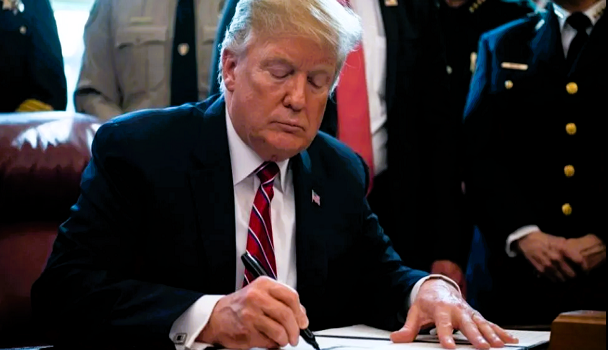







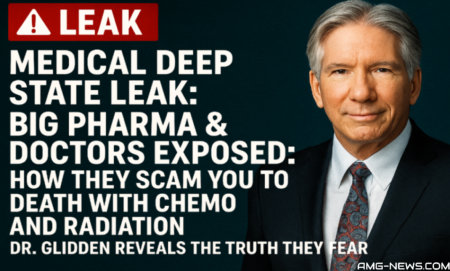
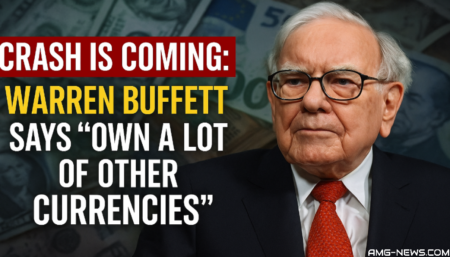
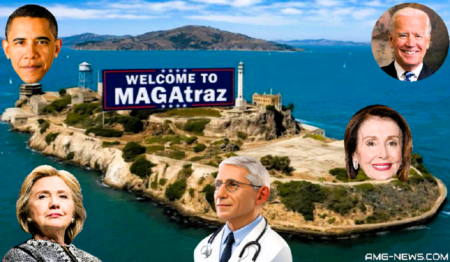
![BREAKING — FLORIDA DECLARES STATE OF EMERGENCY AS mRNA VACCINE DEATHS EXPLODE — “THIS IS GENOCIDE. NOT A SIDE EFFECT.” [OFFICIAL DATA]](https://amg-news.com/wp-content/uploads/2025/05/FLORIDA-DECLARES-STATE-OF-EMERGENCY-AS-mRNA-VACCINE-DEATHS-EXPLODE-450x253.png)
